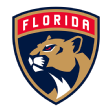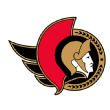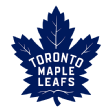Ahead of the free-agency shopping frenzy beginning on July 1, we're surveying the landscape and outlining the unique situation in which every team finds itself. That includes the key pending unrestricted and restricted free agents and the team's current cap space, along with the moves I'd make if I were sitting in the GM's chair. We'll go one division at a time. First up is the Atlantic.
Note: All contract information cited here is courtesy of Cap Friendly, and all underlying numbers are provided by one of Corsica, Natural Stat Trick, or Evolving Wild.

Boston Bruins
Key players hitting UFA: C/W Marcus Johansson, C/W Noel Acciari
Key players hitting RFA: D Charlie McAvoy, D Brandon Carlo, C/W Danton Heinen
Cap space: $12.80 million
The moves I'd make as GM: The Bruins are a somewhat boring team this summer, because there isn't much to do here aside from getting the two restricted free agent defensemen signed for years to come. Beyond that, the entirety of their foundational core is not only under contract, but already signed at team-friendly figures for the most part. They'll once again be a top contender barring some unforeseen events, considering that they'll be bringing back the full cast of characters that fell just one game short of winning it all. Most of the work will come in the margins.
With Boston, the question has always been whether they'll be able to scrounge together enough secondary scoring to supplement those big guns, and they certainly did after acquiring Charlie Coyle and Marcus Johansson at the trade deadline this past season. Retaining the latter isn't essential, but would be a nice luxury, considering the dynamic he provided the team throughout the postseason. He's an exceptional puck carrier, transition player, and in-zone passer, which fits in beautifully with how the Bruins like to attack offensively.
Of course it would be ideal if they could find a way to create more cap room to improve their team by getting David Backes and his $6 million cap hit off the books, but it looks like they're stuck with it for the time being. Complicating matters, he has an eight-team trade list; but even without that, the price they'd have to pay for another team to take him off their hands would likely be too rich. That's especially true considering that the Leafs had to send a first-round pick to Carolina to get Patrick Marleau off of their books, and that Backes has an extra year on his deal at nearly the same dollar figure. The other option would be to buy him out, but doing so would only afford the Bruins $333,000 in savings next season, which isn't nearly enough to justify going that route.

Buffalo Sabres
Key players hitting UFA: W Jason Pominville
Key players hitting RFA: G Linus Ullmark, C/W Evan Rodrigues, C/W Zemgus Girgensons, D Jake McCabe, C/W Johan Larsson
Cap space: $18.92 million
The moves I'd make as GM: In a sense, the Sabres already got their heavy lifting for the summer out of the way by locking up Jeff Skinner long term and not allowing him to test the open market. Eight years and $72 million is a lot of term and money, but legitimate 40-goal scorers who actually provide value elsewhere (in his case, positively impacting shot metrics and drawing significantly more penalties than he takes) are hard to come by, and their salaries tend to reflect that.
The Sabres now need to focus on finding undervalued forwards who can come in and provide a viable secondary source of scoring -- which sounds easy enough, but has proven to be a tough task for them in recent years. Saying they were lacking in it last year wouldn't be fair, because that would imply that it actually existed in some form in prior seasons. It's no surprise that Buffalo was significantly better with Skinner and Eichel out on the ice together at five-on-five considering that they're the team's two best players, but the degree to which things cratered without them were quite troubling:
The good news is that this is one area that the free-agent market often possesses help in greatest volume, and this year's class is no different. Because of that supply, they'll almost certainly be able to greatly improve their depth chart on the wing without actually paying a premium to do so. A player such as Joonas Donskoi is precisely the type of player that they should be targeting, because he'll do wonders for keeping them above water territorially and from a shot-share perspective -- all for a bargain price.
The other thing the Sabres need to do is cash in on Rasmus Ristolainen while they still can, and while the market is as hot as it is for blueliners. He's a 25-year-old right-hand shooting defenseman who is cost controlled for the next three years, which would make him a tremendously valuable asset if he were actually good at hockey. The fact that he isn't is irrelevant here, because history has taught us that there's at least one team out there that will talk itself into fixing him based on that profile, and will pay handsomely for the opportunity to do so. Considering some of the prices we've seen teams pay for such defensemen in recent years, it would be almost impossible for them to not come out ahead by doing so.

Detroit Red Wings
Key players hitting UFA: D Niklas Kronwall, W Thomas Vanek
Key players hitting RFA: None
Cap space: $12.03 million
The moves I'd make as GM: Timing is everything in a salary-cap world. One of the best skills a GM can have in his tool box is the ability to objectively read the room, and assess where his team realistically fits into the league's current power structure. It's really important to time things out with the windows of your contracts, so that you can make your move unabashedly when the opportunity to do so finally presents itself.
For the Red Wings, that window appears to really start to open two years from now, when they'll finally be out from under the financial anchors former GM Ken Holland saddled them with on his way out the door. Next summer, they'll have nearly $13 million in financial commitments come off the books with deals expiring for Mike Green, Trevor Daley and Jonathan Ericsson. The following summer, they'll clear another $10-plus million once Darren Helm, Jonathan Bernier, Luke Glendening and Stephen Weiss' buyouts are up. In that time, they'll also have Henrik Zetterberg and Johan Franzen's contracts finally come to an end as well, freeing up their long-term injured reserve slots and all of the inconveniences that come with filling them.
In the meantime, it would behoove the Red Wings to avoid taking on any bad future money. Everything that's not completely bolted down for the long haul should be in play, and every free-agent contract they hand out should be of the shorter-term variety. They should use this as an opportunity to figure out what they truly have in all of their young players, giving them a chance to play through growing pains and get the necessary reps at this level. If there are any veterans that either don't have other obvious landing spots or are looking to rebuild their value on the fly, they can offer them prime scoring minutes and the promise that they'll be moved to a contender at the deadline should they produce. They've made at least 10 picks over the past three drafts -- 32 total, although the 2017 class was disastrous, with five of their picks not even being signed as of this writing -- and already own nine picks in 2020, a number that'll only grow between now and the trade deadline.
The good news is that new GM Steve Yzerman comes in with a blank slate and a long leash, allowing the Red Wings to see this rebuild through properly without any real desperation to misguidedly fast track things with quick fixes. Missing the playoffs for three seasons in a row and counting is an especially bitter new reality for an organization that prided itself on the 25-year stretch that came before it, but at least there's finally light at the end of the tunnel in Detroit. That's something that couldn't be said a couple of years ago, when they were bad but also stuck with no cards to play.

Florida Panthers
Key players hitting UFA: C/W Riley Sheahan, W Troy Brouwer, W Jamie McGinn
Key players hitting RFA: C/W Denis Malgin, D Mackenzie Weegar, G Sam Montembeault
Cap space: $20.48 million
The moves I'd make as GM: The Panthers certainly haven't been shy about telegraphing their intentions for this summer. Thanks to a number of shrewd midseason trades, they not only recouped seven future draft picks, but just as importantly cleared a healthy chunk of cap space to play with in free agency. Considering that they've been heavily linked to a pair of former teammates who just so happen to be two of the biggest names available on the unrestricted market as a package deal, let's work under the assumption that that's indeed the direction they're going in.
Regardless of the price tag, landing a player of Artemi Panarin's caliber is so impactful that you simply do it, and make everything else fit around that deal afterward. In his two seasons as the primary offensive creator in Columbus, he was spectacular. Connor McDavid, Nikita Kucherov and Patrick Kane were the only players with more five-on-five points than Panarin in that time, with McDavid and Kucherov being the only two players to personally create more five-on-five goals than his 87. He was "only" 18th in overall points over the last two seasons, largely due to an anemic Blue Jackets power play. That shouldn't be a problem in Florida, where the Panthers' man advantage was outscored by only Tampa Bay's last season. Unlike most free agents that hit the open market in their late 20s, term shouldn't be a sticking point with Panarin either. He got a late start to his NHL career, having logged only 322 games (and another 27 in the postseason) to this point. With an elusive playing style that allows him to escape relatively unscathed -- he took the eighth fewest hits on a per-minute basis last season -- he should age rather gracefully into his 30s.
The case of pursuing Sergei Bobrvosky is more complicated. Considering that the Panthers were 30th in save percentage and 28th in goals against last season, it would certainly fit a need. And while his own .913 save percentage for the season in 2018-19 fell well below his usual lofty standards, it doesn't paint an entirely accurate picture. After the All-Star break, he stopped a clean 93% of the shots he faced, posting a whopping seven shutouts in just 26 games. Add on a .925 save percentage in 10 playoff games, in which he finally got the postseason monkey off his back, and he enters free agency on a significantly higher note. However, the issue is the idea of committing the type of dollars and term that he'll command given the volatile nature of the position. Bobrovsky turns 31 in September, which makes that type of investment risky for the Panthers. But when you've made the playoffs once in seven years, and gone 23 years since your last series win, you tend to feel a certain desperation to make splash moves.

Montreal Canadiens
Key players hitting UFA: D Jordie Benn
Key players hitting RFA: W Joel Armia, W Artturi Lehkonen, W Charles Hudon
Cap space: $10.21 million
The moves I'd make as GM: Montreal is in a good spot organizationally right now, despite having missed the playoffs in back-to-back seasons for the first time since the turn of the century. They have a loaded prospect pipeline that's considered to be one of the league's deepest groups, thanks to the 21 selections they've made over the past two drafts. Their main roster core is in its collective prime for the most part, and locked up for the next couple of seasons. They also have the financial flexibility to go out and improve their roster this summer, with the ability to create even more space next year by buying out Karl Alzner this summer (which would afford them an extra $3 million in space).
Their forward group is deep, fast, and incredibly effective. At five-on-five, they're quite the handful for opponents, clocking in somewhat surprisingly as the sixth-highest-ranked scoring offense last season. However, the power play was an entirely different story, where they couldn't buy a goal to save their lives. They were the 30th-ranked power-play offense, with only the Predators creating goals less frequently. Part of the issue is that they never really replaced Max Pacioretty's shot after his trade, which is why they should be in the hunt for another triggerman.
Paying for goals in free agency can be costly, but someone like Ryan Dzingel seems like a natural fit given his skating ability and playing style. Most importantly, he's a career 15% shooter in his three-plus NHL seasons, representing the type of threat the Canadiens desperately need. The other name to consider is Mike Hoffman, who could conceivably be a victim of a numbers game in Florida if they land Artemi Panarin in free agency.
The other area of need for them is skill and puck-moving ability from the blue line, which would help fuel their preferred relentless five-on-five attack through the transition game. Given his age and recent injury track record, expecting a full 82 games from Shea Weber seems quite ambitious; if he can't be counted on, there are a lot of question marks beyond Jeff Petry on the depth chart. It's a shame that Erik Karlsson was taken off the open market by the Sharks before he could ever get there, because the speculated interest between the former Senator and the Canadiens made a lot of sense. The next logical option is Jake Gardiner, depending on how high the bidding for his services gets, and whether the cost of acquisition becomes prohibitive.

Ottawa Senators
Key players hitting UFA: W Magnus Paajarvi, C/W Oscar Lindberg, C Brian Gibbons
Key players hitting RFA: D Cody Ceci, C/W Colin White, D Christian Wolanin
Cap space: $33.02 million
The moves I'd make as GM: The glass-half-full view of the Senators' current financial situation is that they're essentially a blank slate, meaning that there's ample opportunity for any number of young players to step up and earn minutes without any real depth-chart roadblocks in their way. At the moment, they don't have a single defenseman who isn't playing on his entry-level contract on their books past 2019-20, and Bobby Ryan is the only such player under contract beyond 2020-21. Heading into the 2019-20 season, Ryan is the only active skater they have making more than $4 million, their second- and fourth-highest paid players are on long-term injured reserve, and three of their top 10 salaries are devoted to goaltenders.
It's remarkable that in a league where teams are now scrambling to sell off pieces and find creative ways to get under the cap, the Senators are going to have to work hard just to reach the $60.2 million floor this summer. One thing they can do is throw those teams a life line of sorts by taking on front-loaded deals that have been largely paid out already, while also receiving future assets in the form of prospects or picks.
For example, shedding Milan Lucic's $6 million cap hit for the next four years would be immensely valuable to the Oilers. After his signing bonus is paid out this summer, he's owed "only" $16 million total in real cash over the final four years of his deal. Clearing that cap room to use on more productive present-day players would surely be of interest to Edmonton, as it would be for the Senators to take on a contract that helps them toward the floor without actually denting Eugene Melynk's pockets significantly. Jeff Carter similarly carries a $5.27 million cap hit for the next three seasons, but is owed just $7 million total in cash over that time. The difference there is that the Kings seem more likely to be content with their current rebuild, making it less likely they'd be willing to fork over valuable assets to scrub that contract from their books.
It's undoubtedly a flaw in the system and not a good look for the league, but one that the Senators are uniquely positioned to take advantage of in the present and benefit from in the future. Some teams cheer for raw points, while other teams cheer for cost per point.

Tampa Bay Lightning
Key players hitting UFA: D Anton Stralman, D Dan Girardi
Key players hitting RFA: C/W Brayden Point, W Adam Erne, C/W Cedric Paquette
Cap space: $10.63 million
The moves I'd make as GM: Just one week ago, this would be an entirely different discussion, but after Ryan Callahan's career being cut short by injury and J.T. Miller's contract being absorbed by the Canucks at the draft, the Lightning suddenly possess some much-needed financial breathing room. If push comes to shove and they need to shed even more salary, we could see at least one of Tyler Johnson, Ondrej Palat or Alex Killorn get flipped as well. Moving them is complicated by the fact that Yanni Gourde is the only one that can be moved freely before his own no-trade clause kicks in on July 1, but we see time and time again that when there's a will there's a way when it comes to working around these things..
We see time and time again that the well-run teams in the NHL seem to find a way to craftily wiggle their way out of cap hell, somehow coming out on the other side looking even better for it. Because of their embarrassment of riches up front, even their expendable secondary and tertiary contributors carry more appeal around the league than they otherwise would. There are presumably many teams desperate for a talent infusion that would gladly take on a player like Tyler Johnson because of his 29 goals scored last season, not fully appreciating that it'll be more difficult to replicate that success once he's no longer riding shotgun alongside Nikita Kucherov or Brayden Point.
At this point the Lightning can afford to bleed out cap casualties because of how well they've drafted in past years, having younger and cheaper options primed for larger roles. Players like Anthony Cirelli and Mathieu Joseph can seamlessly slide up the depth chart and fill in without skipping a beat, while still playing on their entry-level deals, which is a luxury that can't go overlooked.
Because of the combination of the lack of a state income tax and the fact they provide veteran players with a chance to immediately compete for a Stanley Cup, Tampa Bay will continue to be linked to any big name that comes available. They need to be careful with how they proceed, however, because an important summer looms large in 2020. Andrei Vasilevskiy, Mikhail Sergachev, Erik Cernak, Cirelli and Joseph will all be restricted free agents, and they figure to see a sizeable contract inflation. It's understandable that the Lightning will do everything they can to try to win it all next season, especially after the bitter ending to their magical 62-win season that they just endured. But if they play this right and think ahead this summer, they can set themselves up for even more kicks at the can in the years to come.

Toronto Maple Leafs
Key players hitting UFA: D Jake Gardiner, D Ron Hainsey, D Martin Marincin, C/W Tyler Ennis
Key players hitting RFA: W Mitch Marner, W Andreas Johnsson, W Kasperi Kapanen
Cap space: $13.54 million
The moves I'd make as GM: The Leafs don't have much wiggle room this summer, hence the exorbitant price they paid to shed Patrick Marleau's salary, so they'll have to get creative. The first priority is taking care of their restricted free agents. While it's been reported that Johnsson and Kapanen have agreed to deals in principle, the remaining uncertainty surrounding Marner's demands promises to hog the headlines for the foreseeable future. He's a tremendous talent who excelled alongside John Tavares last season, but at some point the Leafs will have to think long and hard about how much those services are worth, and whether they're better off banking the draft picks and cap space to improve elsewhere should an offer sheet actually materialize.
Beyond that, the rest of their resources should be fully devoted to two tasks: revamping the blue line, and finding a reliable backup goaltender.
The first part is the most pressing concern. Of their top six defensemen last season, it's possible they'll have only two of them on opening night in 2019-20. Gardiner will likely walk for a massive pay day, Hainsey doesn't have much left in the tank and is probably gone too, Zaitsev has asked for a trade and Travis Dermott is set to miss an extended period after having offseason surgery. It's a dire situation for a team that already had plenty of question marks. The market for impactful defensemen dries up rather quickly, so they'll presumably try to patch up the holes through either trade or promoting from within (with Timothy Liljegren and Rasmus Sandin waiting in the wings after impressive showings in the AHL).
The goaltending situation is more of a champagne problem, but one that they'd do well to address. Since Frederik Andersen came to Toronto three seasons ago, no goalie has played more than him -- and the gap in the amount of shots faced between Andersen and the pack has been quite stunning:
He's held up admirably under the pressure, serving as a rare consistent performer at a typically unpredictable position. But if the Leafs have aspirations for finally getting over the hump and playing deep into the postseason, they'll need to do a better job of preserving him by dialing his usage back throughout the regular season. With how good their team is and their position in the playoff picture safe, there's no reason he should be sniffing anything approaching the 60 games played mark next year.
The landscape has been shifting toward 50-50 splits in net for some time now, and the success teams like the Islanders, Stars and Bruins enjoyed rotating their netminders will only push that agenda even further. In today's game you really need two goalies you can trust to give your team a chance to win on any given night, as well as to preserve your No. 1 for a long playoff run.
